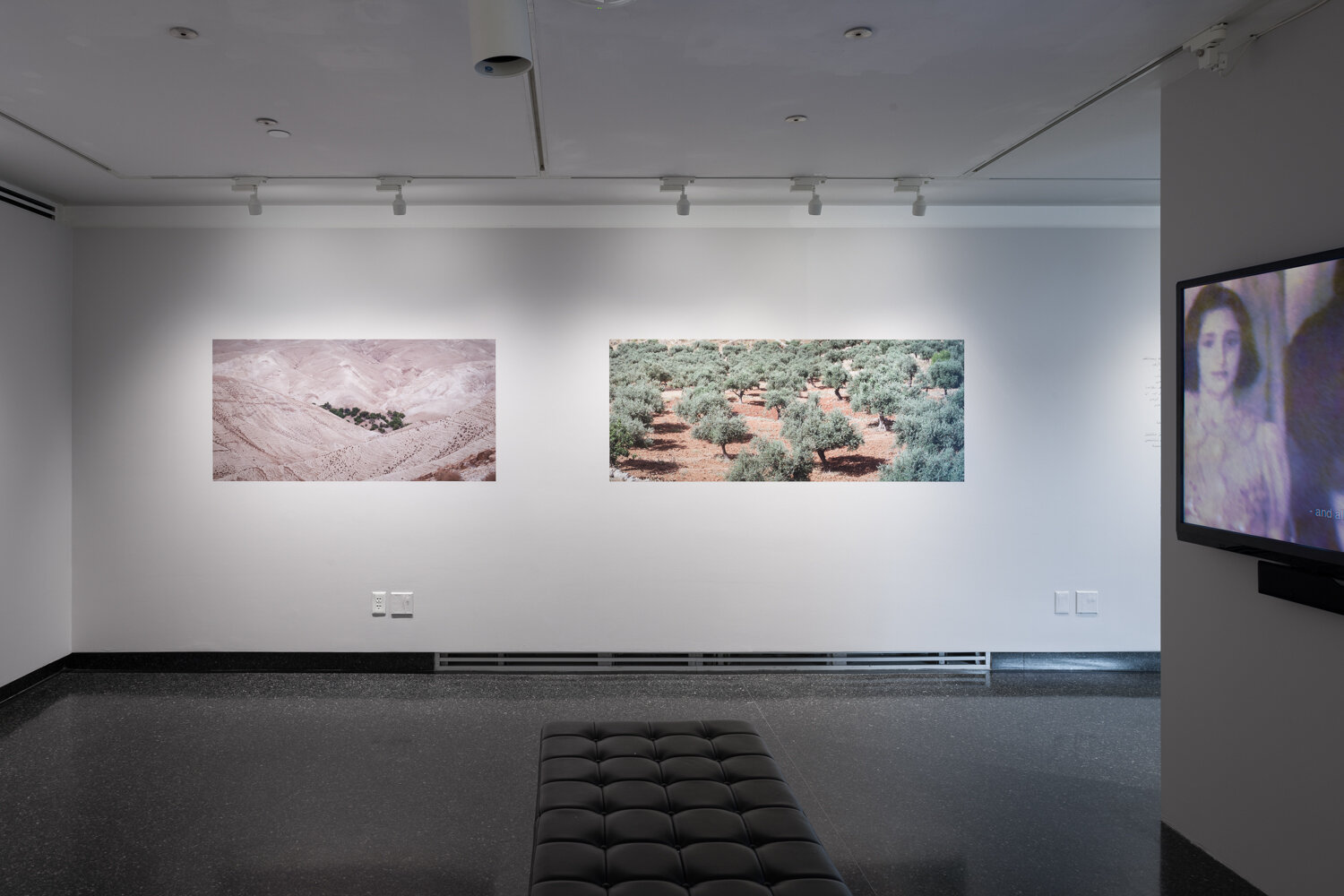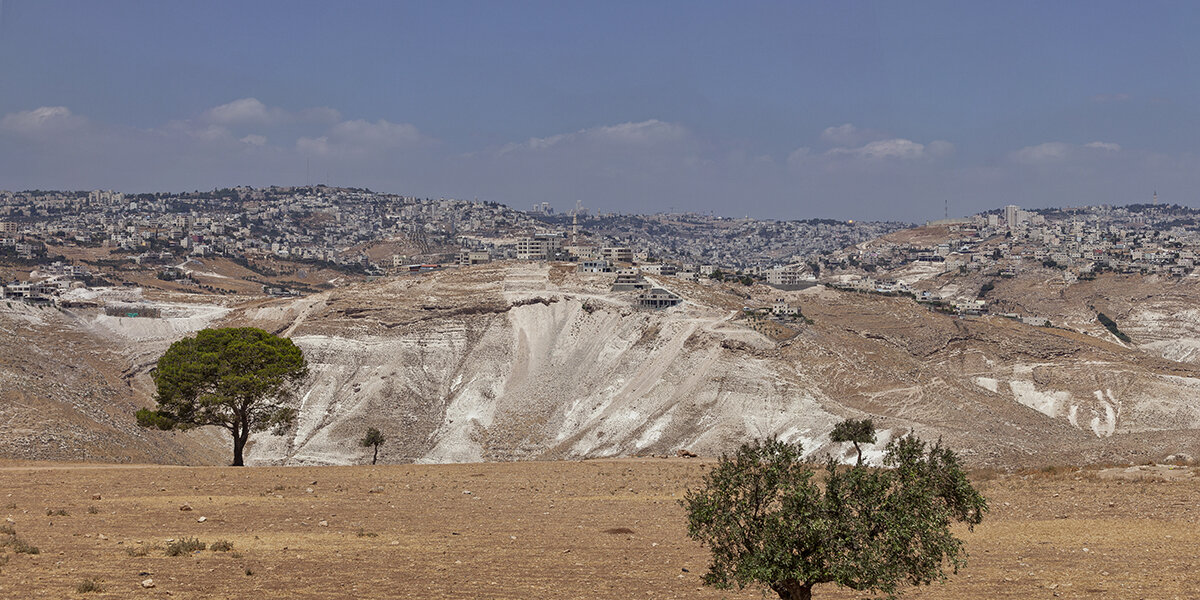8.49 million grains of soil, 2020, inkjet on vinyl
8.49 Million Grains of Soil is a series of seemingly quiet landscapes, each speaking multitudes about the planning of land under colonization.
Many of the images are taken from afar, of locations I could see but could not travel to freely: the view of Jerusalem from Beit Sahour; the olive grove that sits at the foot of an Israeli settlement; the slopes of the Jordan valley, much of it marked for Israeli military training and resource extraction. The colonial infrastructure that exists and continues to be built in Palestine today is not merely made up of watchtowers, barbed wire, segregated roads, and concrete walls. It is also in the formation of landscapes that appear to be natural, but which disguise the reality of who can move and live freely, and who cannot. Vast swaths of Palestinian land are annexed through Israeli laws (appropriated from Ottoman period taxation laws) that allow land to be categorized as “non-cultivated” and transferred to the occupying state.
The panoramas display different climates and topographies, from the arid slopes of the Jordan valley, to the fertile red-soil plains of Jenin and the stony hills of Nablus. The series attempts to challenge some of the many myths promulgated about the land of Palestine, key among them, the notion that the land is a desert waiting for the settler to bring it into bloom, or that Palestine is too populated to accommodate the return of the refugees.
The images are mounted in vinyl directly on the wall, inviting viewers to step into the scenes on display. Some are single photographs and others are composed of multiple photographs stitched together.








